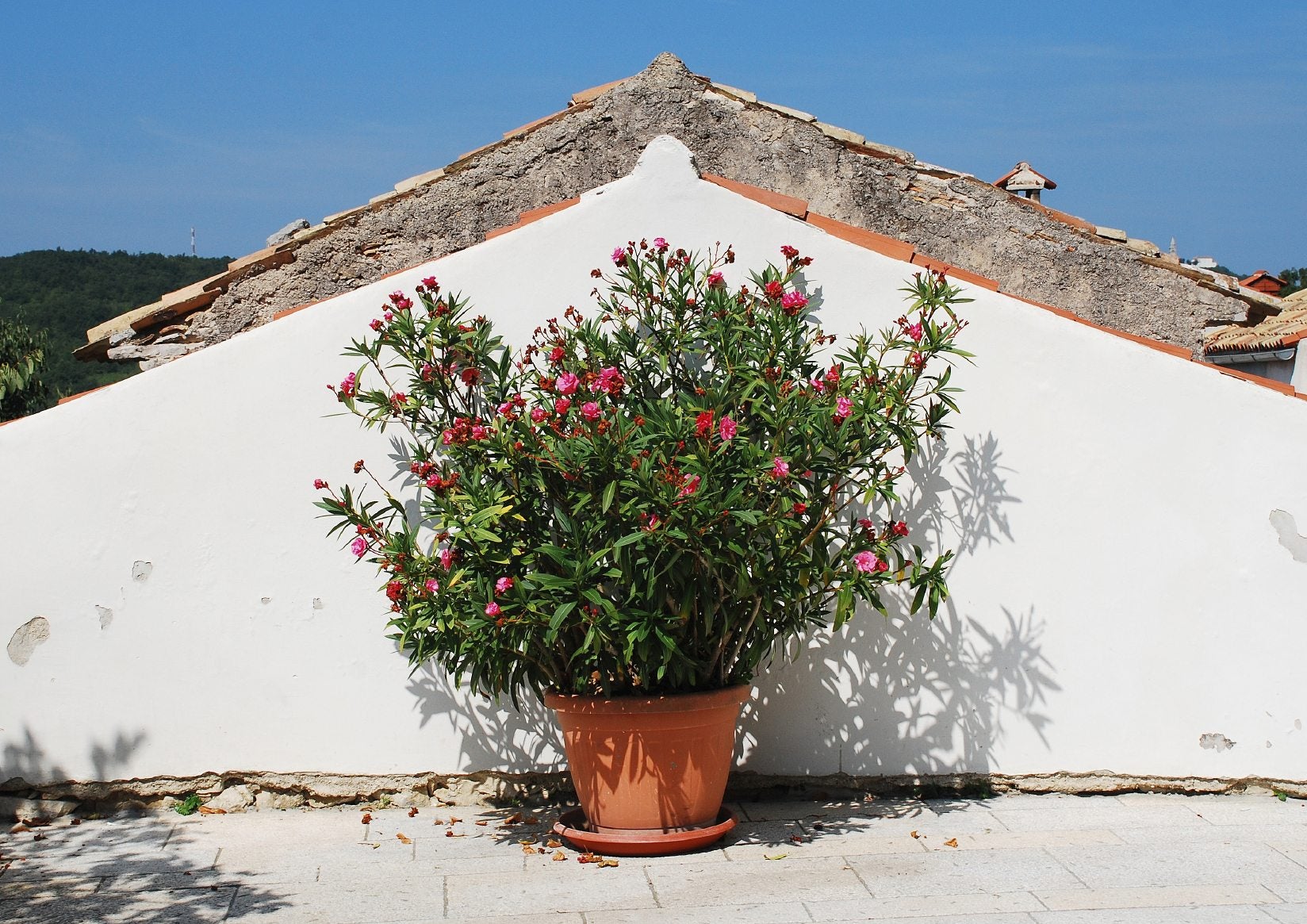Oleander Container Gardening: Tips On Growing Oleander In Containers


The oleander is a Mediterranean plant that’s been popular throughout Europe for hundreds of years. It has a following in the southern United States and it’s starting to take hold in the north too. It’s a perennial plant that can’t tolerate freezing temperatures, so growing oleander in containers is the only way to go in a lot of climates. Keep reading to learn more about oleander container gardening and how to grow oleander in pots.
Growing Oleander in Containers
The fact that oleander is so popular throughout Europe-- where in most parts it can’t survive the winter-- should give you a clue to how easy it is to grow in a container. In fact, oleander is just easy to grow in general. When growing oleander in containers, it’s important to give them plenty of sun and adequate water. Although they can handle drought conditions when planted in the ground, container grown oleanders should be watered frequently. They will survive in some shade, but they won’t produce blossoms as spectacularly as in full sun. Other than that, oleander container care is very simple. Feed your plants with a simple fertilizer every other week from spring until late summer. Use a high potassium fertilizer in high summer to ensure the best possible blooming season. When temperatures start falling in late summer, bring your container grown oleanders indoors. If your plant has gotten too large over the course of the summer, it’s okay to prune it back so it can fit indoors more comfortably. You can even root the cuttings you’ve taken during pruning to propagate new plants (Just be aware that oleander is toxic and can irritate the skin. Always wear gloves when pruning!). Keep your plants in a cool garage or basement that won’t go below freezing during the winter. In the spring, when all danger of frost has passed, start moving your plants outside gradually. Leave them outside for one hour the first day, then an additional hour every day after that for a week. Start your plant out in partial shade, then move it to full sun once it’s had a few days to adjust to the sunlight.
Gardening tips, videos, info and more delivered right to your inbox!
Sign up for the Gardening Know How newsletter today and receive a free copy of our e-book "How to Grow Delicious Tomatoes".

The only child of a horticulturist and an English teacher, Liz Baessler was destined to become a gardening editor. She has been with Gardening Know how since 2015, and a Senior Editor since 2020. She holds a BA in English from Brandeis University and an MA in English from the University of Geneva, Switzerland. After years of gardening in containers and community garden plots, she finally has a backyard of her own, which she is systematically filling with vegetables and flowers.
-
 Looking For Plants To Give You The Soft And Fuzzies? Try These 5 Fuzzy Leaf Plant Options
Looking For Plants To Give You The Soft And Fuzzies? Try These 5 Fuzzy Leaf Plant OptionsLovers of texture, drama, silver foliage and tactile plants will adore these special sensory garden additions. These fuzzy leaf plant options will leave you all aglow
By Susan Albert
-
 Get Ready For A Summer Of Hummers! Grow These Full Sun Hummingbird Plants and Flowers
Get Ready For A Summer Of Hummers! Grow These Full Sun Hummingbird Plants and FlowersIf you’re lucky enough to enjoy a sunny backyard, make sure you are maxing out on your pollinator opportunities and grow these full sun hummingbird plants and flowers
By Tonya Barnett